Breast Augmentation Mammoplasty
Breast augmentation mammoplasty or breast implants is a procedure to increase breast size and shape by inserting breast implants. Breast augmentation mammoplasty can also improve cleavage and help to correct uneven or misshapen breasts.
 Before & After
Before & After

What is Breast Augmentation Mammoplasty?
Breast Augmentation Mammoplasty, commonly referred to as “breast implant surgery”, is a sophisticated medical procedure aimed at enhancing the size and shape of the breasts through the insertion of implants. This procedure not only augments the breast dimensions but also plays a crucial role in refining the cleavage and addressing issues related to asymmetrical or irregularly shaped breasts.
This surgical intervention, also known as Breast Enlargement or Augmentation Mammoplasty, is extensively recognised for its efficacy and popularity. It involves a meticulous process of selecting implants that align with the patient’s desired size and contour.
In many instances, Breast Augmentation Mammoplasty is performed in conjunction with Nipple and Breast Lift (Mastopexy) surgeries. This combination significantly enhances the overall size and appearance. Additionally, patients may opt for fat grafting to the breasts, which can be integrated with Breast Augmentation Mammoplasty, Breast Lift (Mastopexy), or Nipple Surgery to achieve specific aesthetic goals. These options can be extensively discussed during the consultation with Dr. Drielsma.
Post-operative outcomes of Breast Augmentation Mammoplasty typically include:
- Enhanced breast volume and fullness
- Refined and defined cleavage
- Correction of breast ptosis (sagging)
- Improved symmetry and resolution of genetic anomalies such as tuberous breasts
Each Breast Augmentation Mammoplasty procedure is uniquely tailored to the individual’s requirements. However, all surgical plans consider the following aspects:
- The volume and quality of existing breast tissue
- Positioning of the breast and nipple
- The health and elasticity of breast skin
- The structure of underlying chest muscles
- The patient’s aspiration regarding shape and size
- The selection of implant size, shape, and type
This comprehensive approach ensures that the procedure is conducted with the utmost precision, adhering to the highest standards of medical excellence and patient-specific needs.
Before and After Gallery
Breast Augmentation
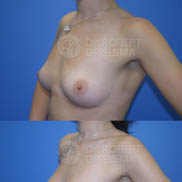
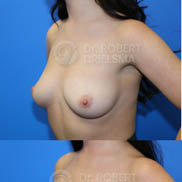

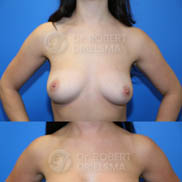
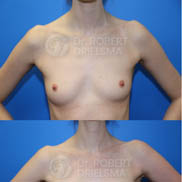
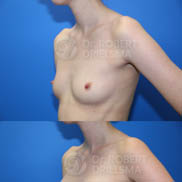
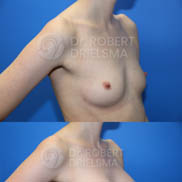
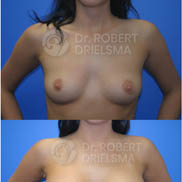
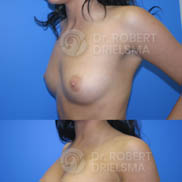
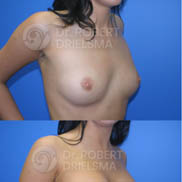
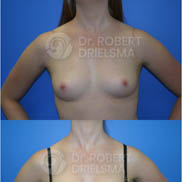
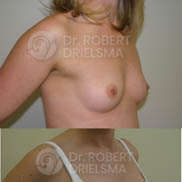
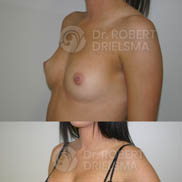

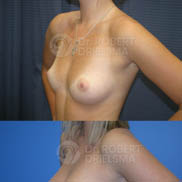
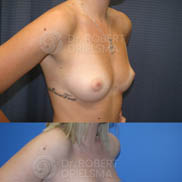
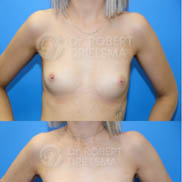
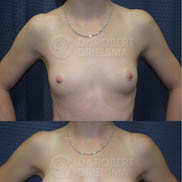
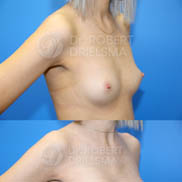
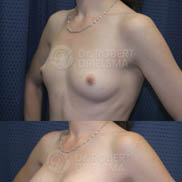

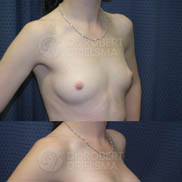
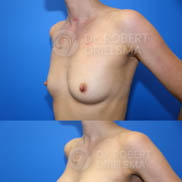
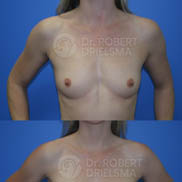

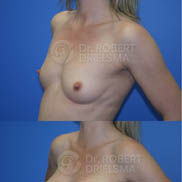
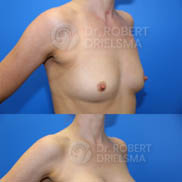
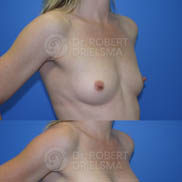
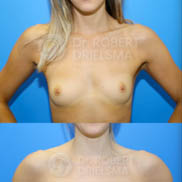
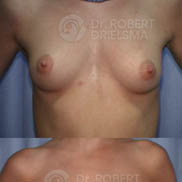
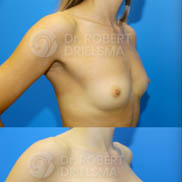
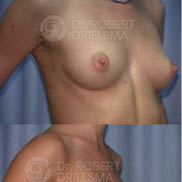
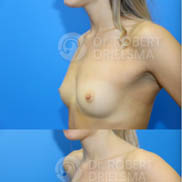
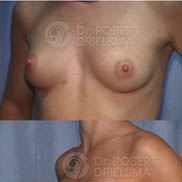
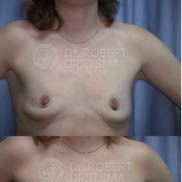
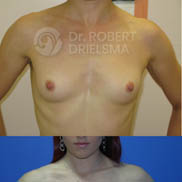
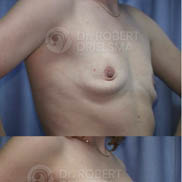
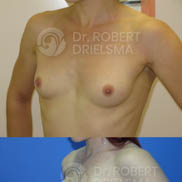
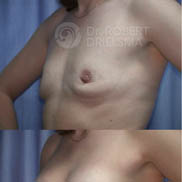
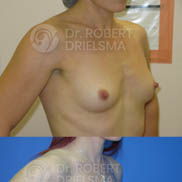
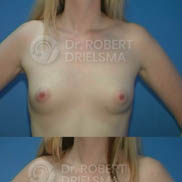
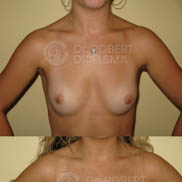
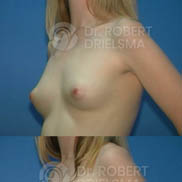
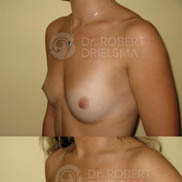
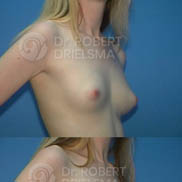
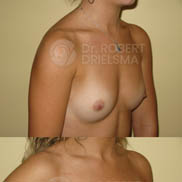

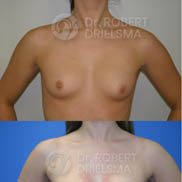
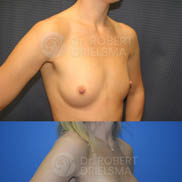
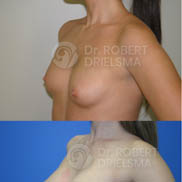
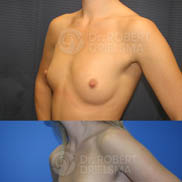
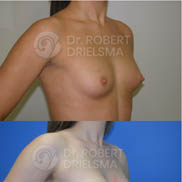
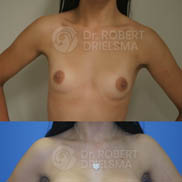
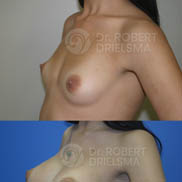
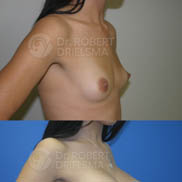
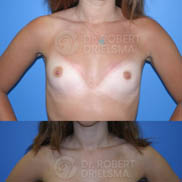
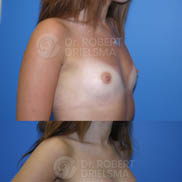
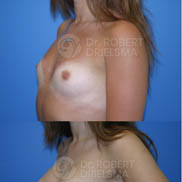
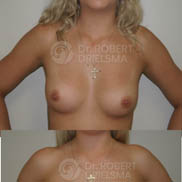
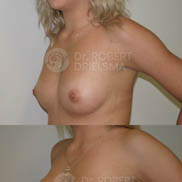
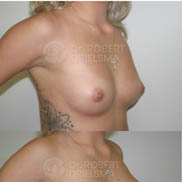
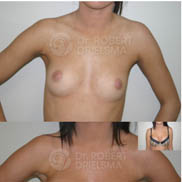
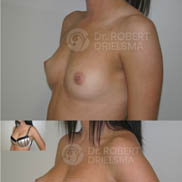
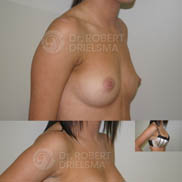
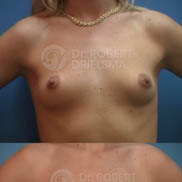
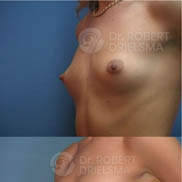
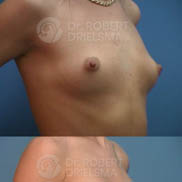
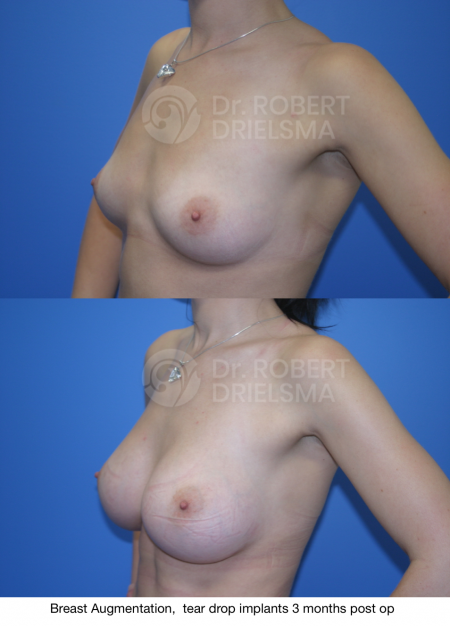
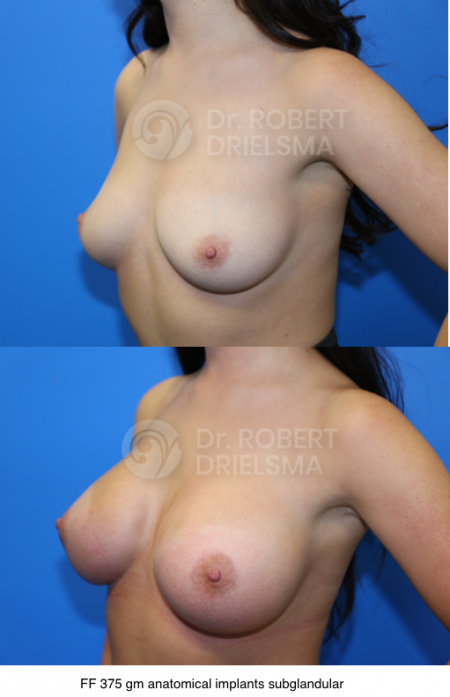
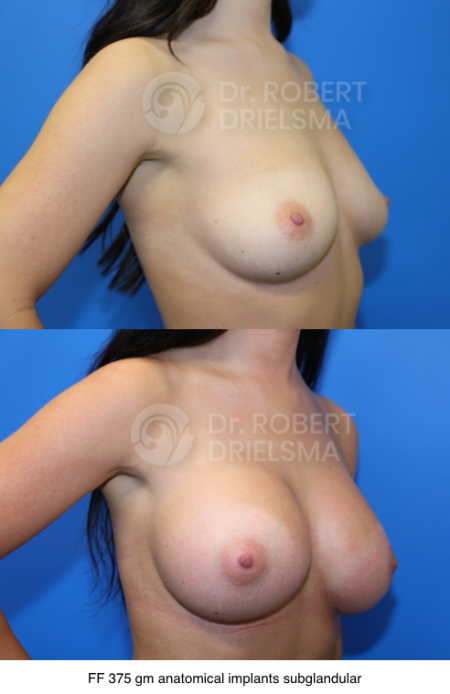
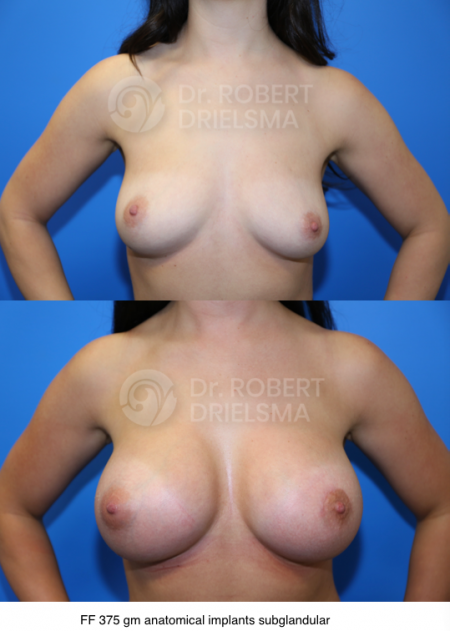
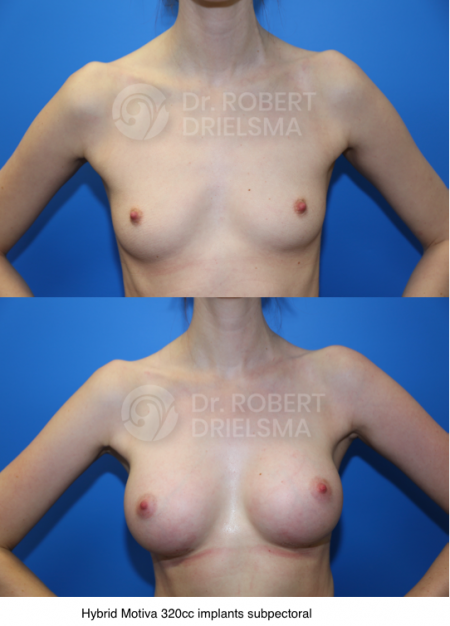
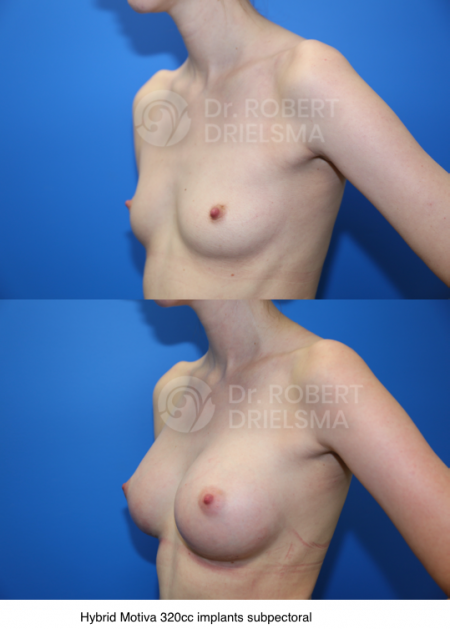
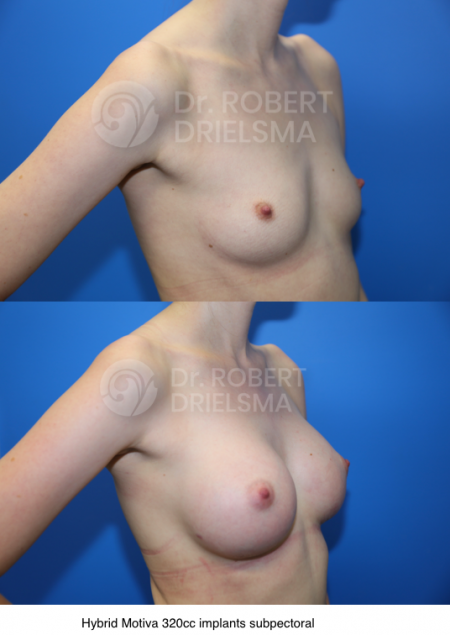

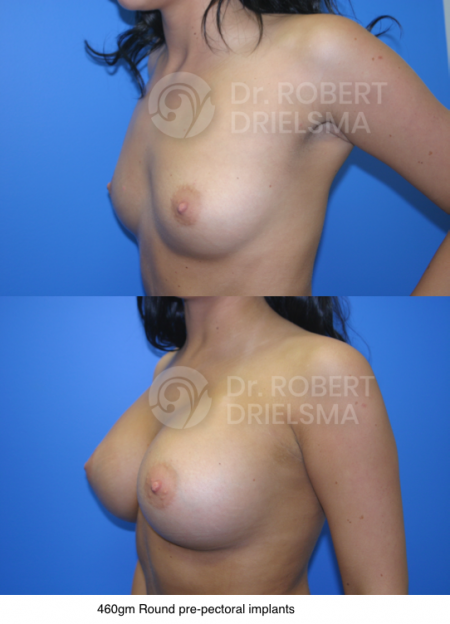
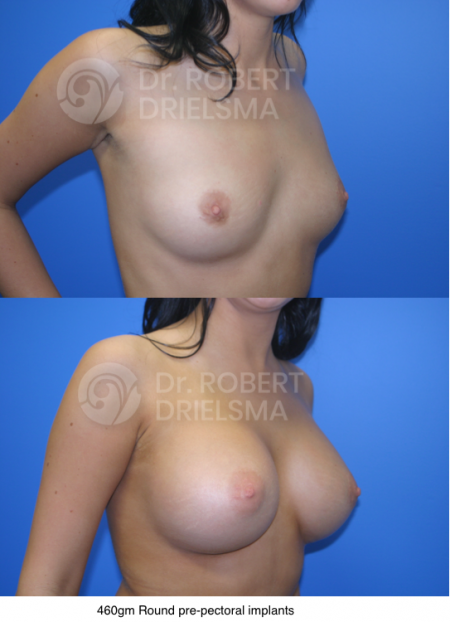
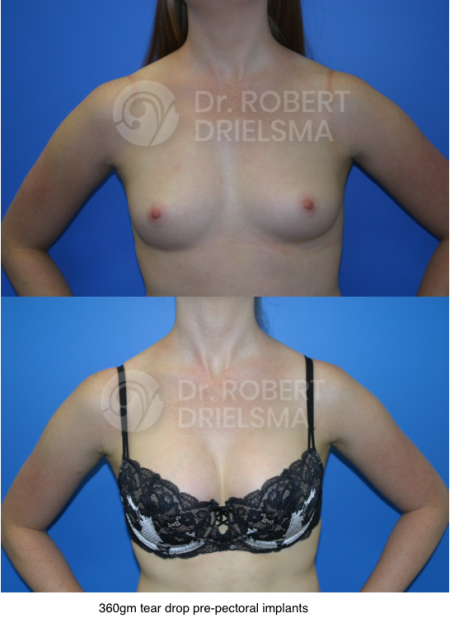
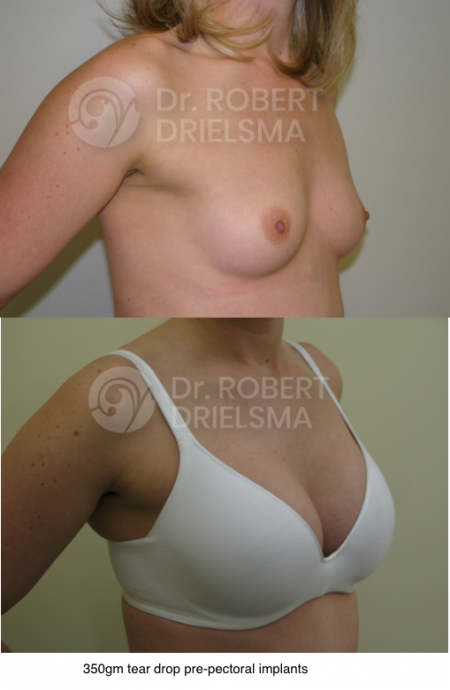
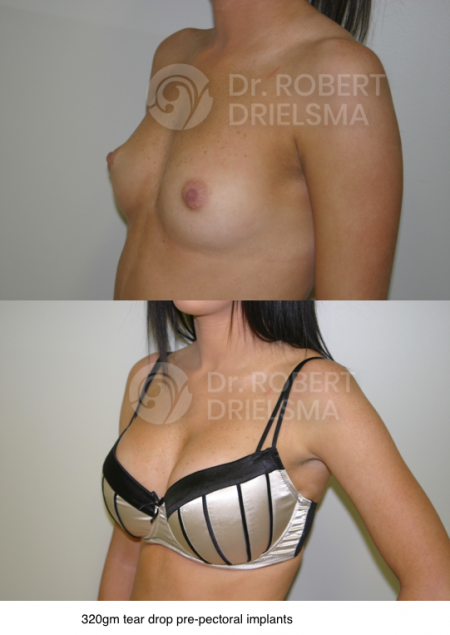
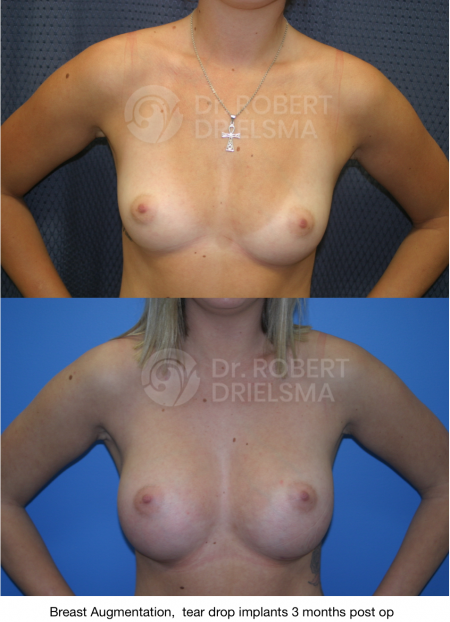
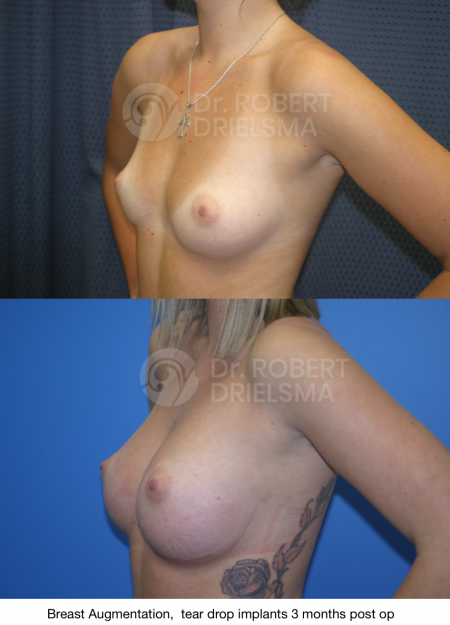
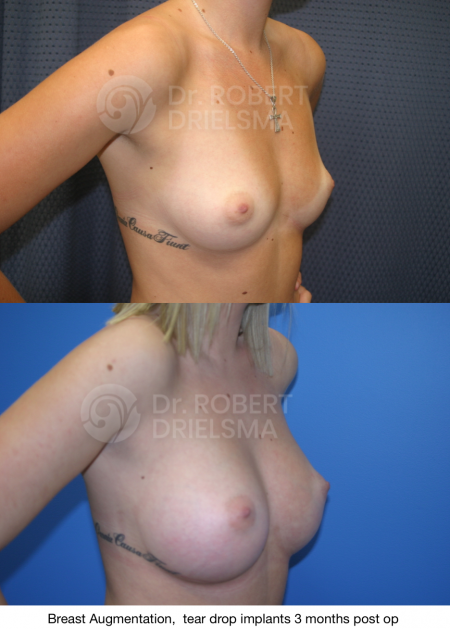
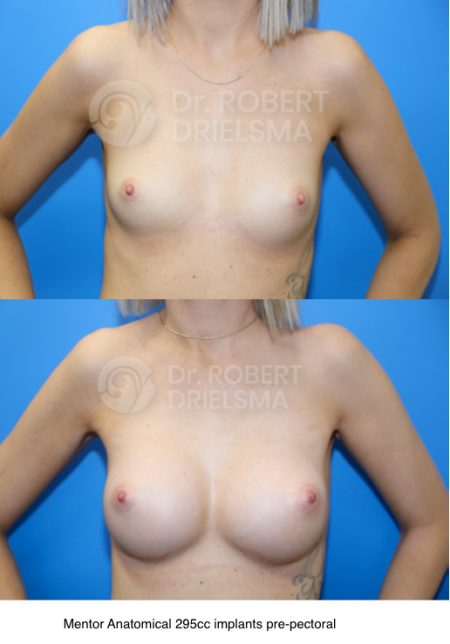
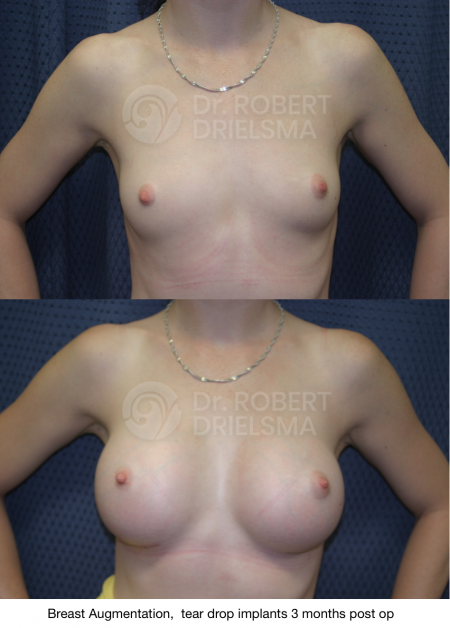
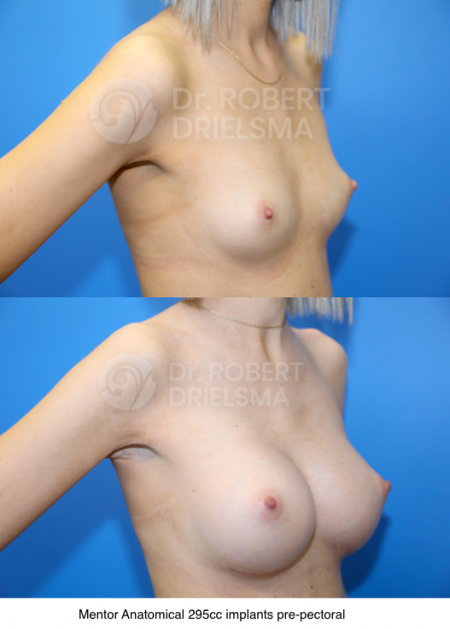
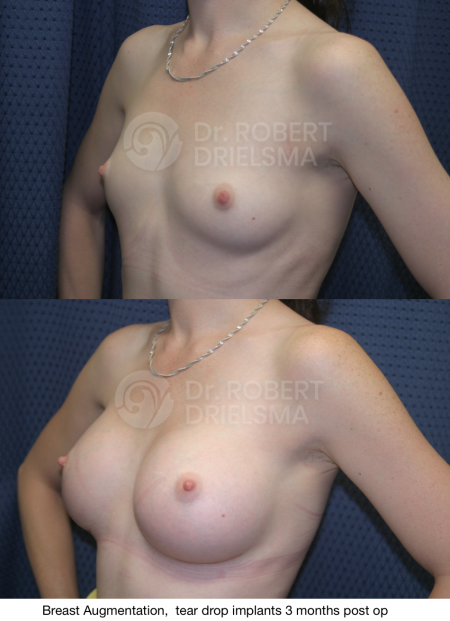
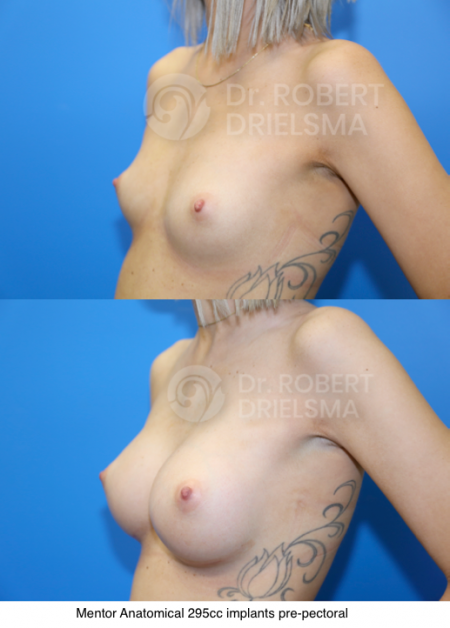
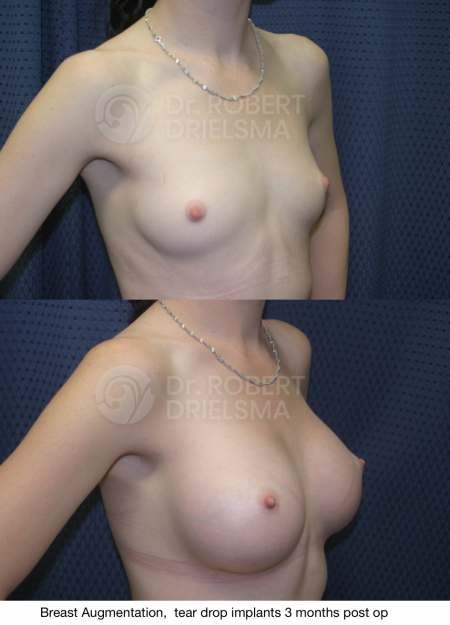
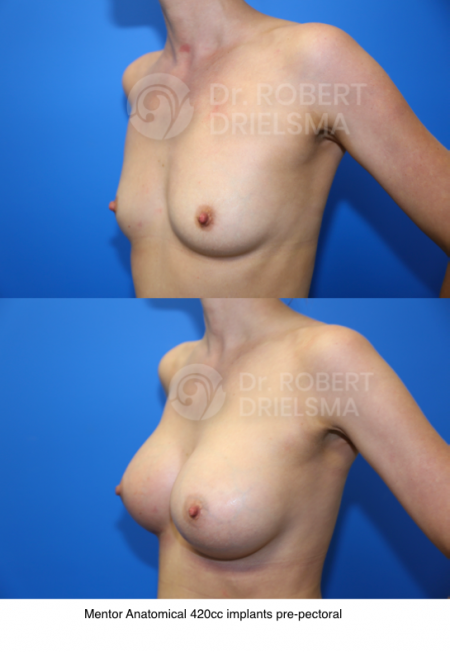
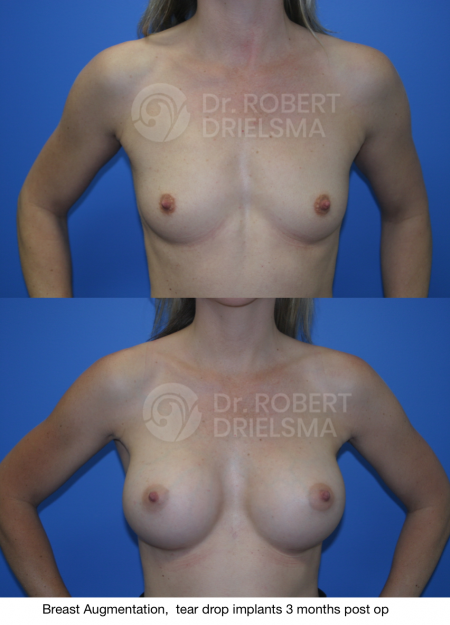
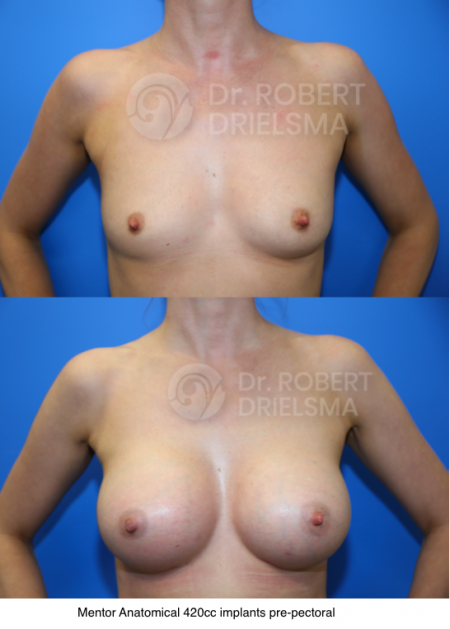
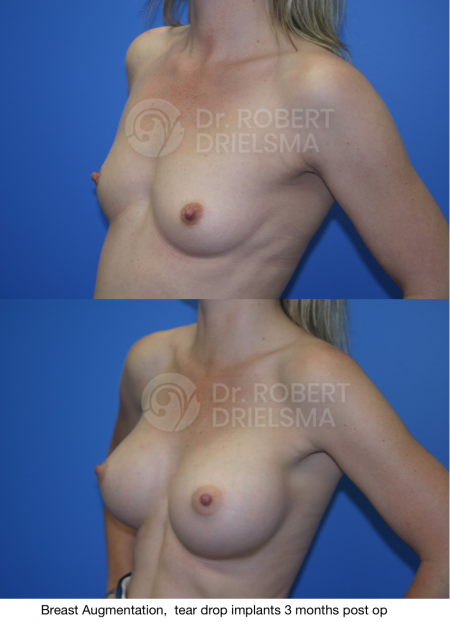
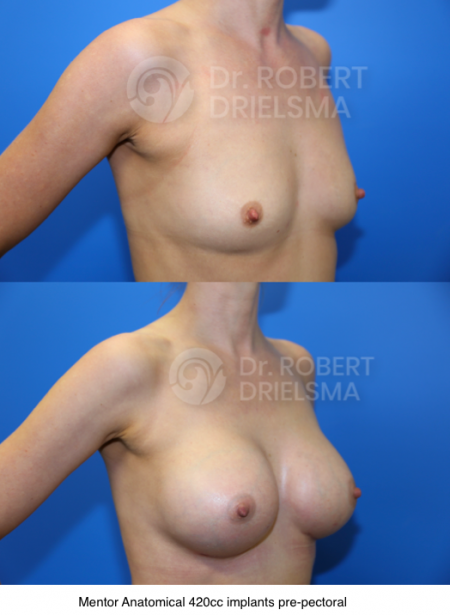
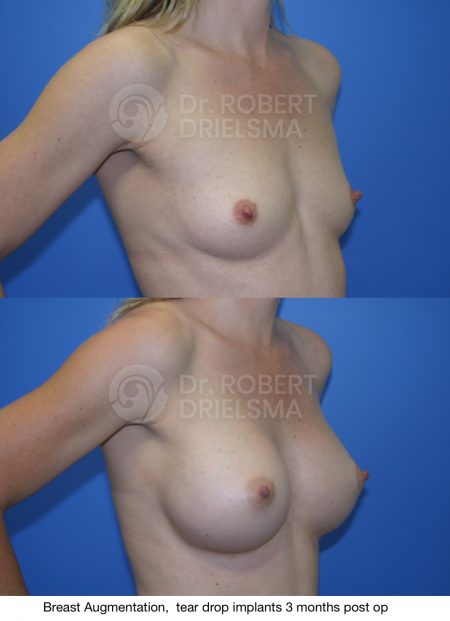
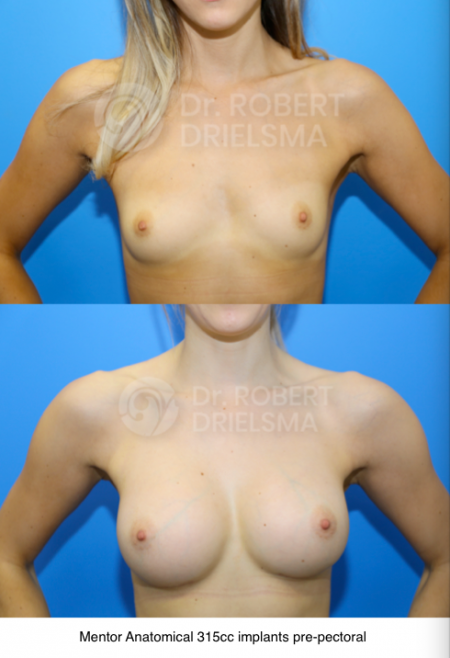
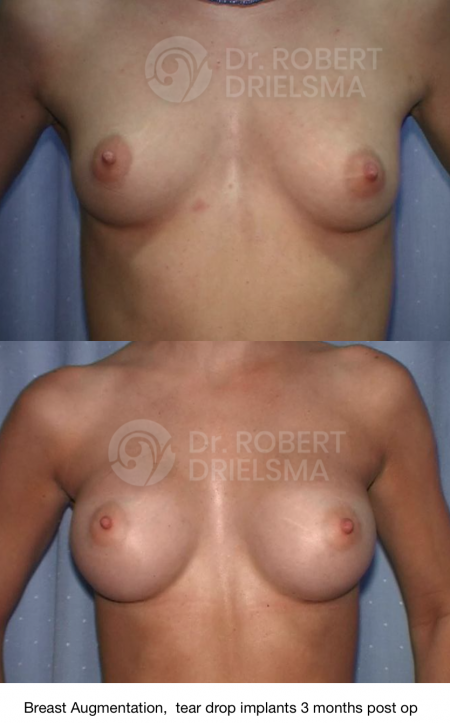
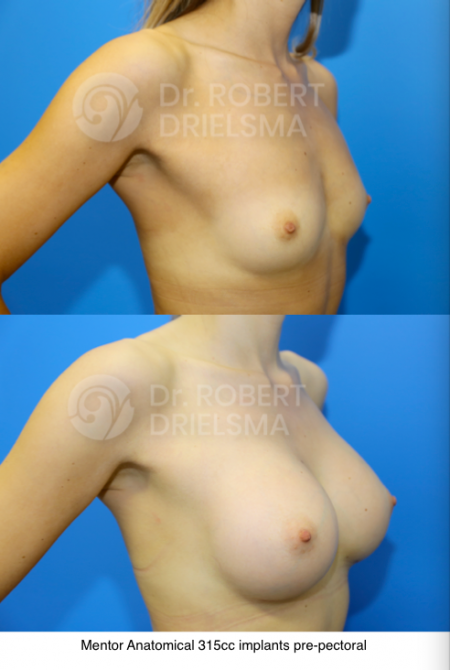
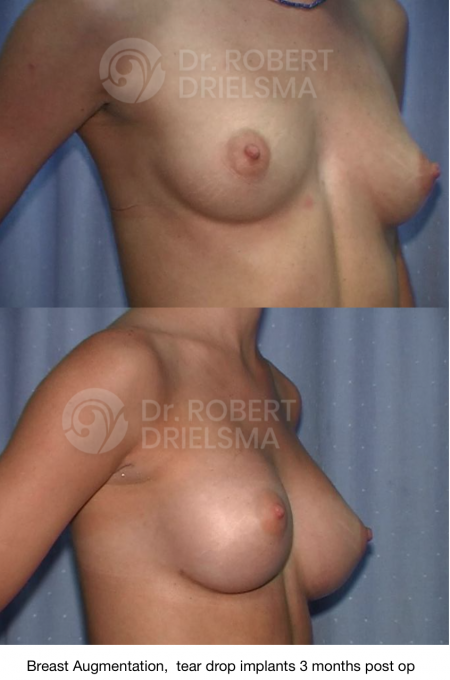
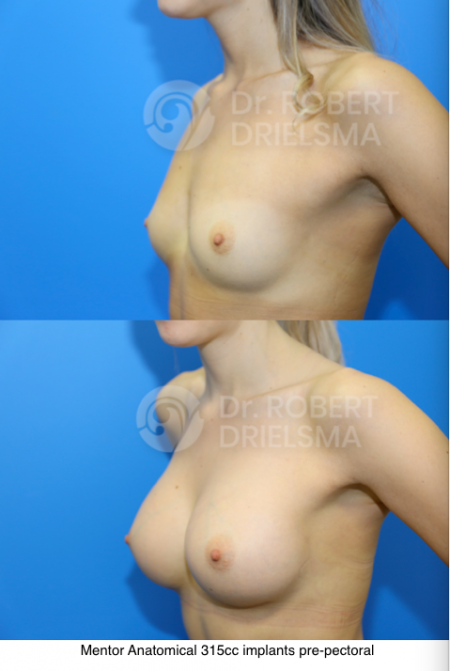

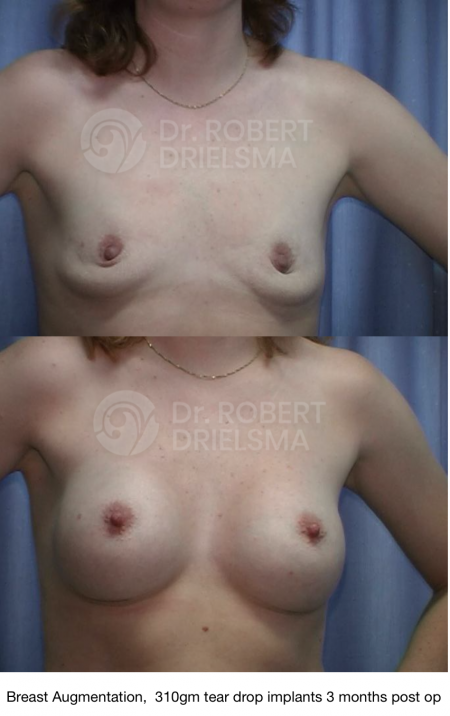
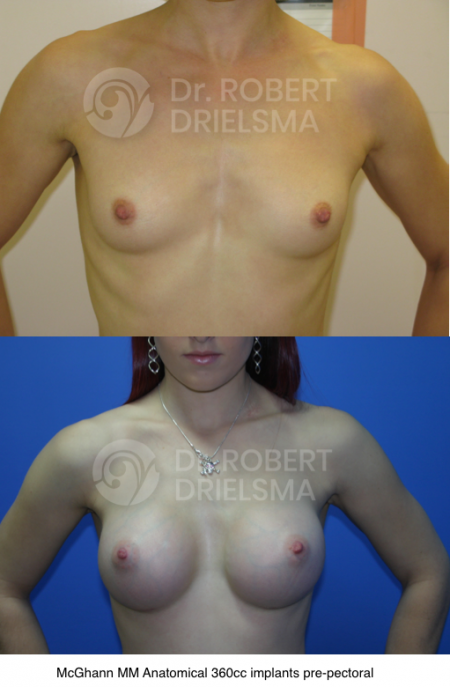
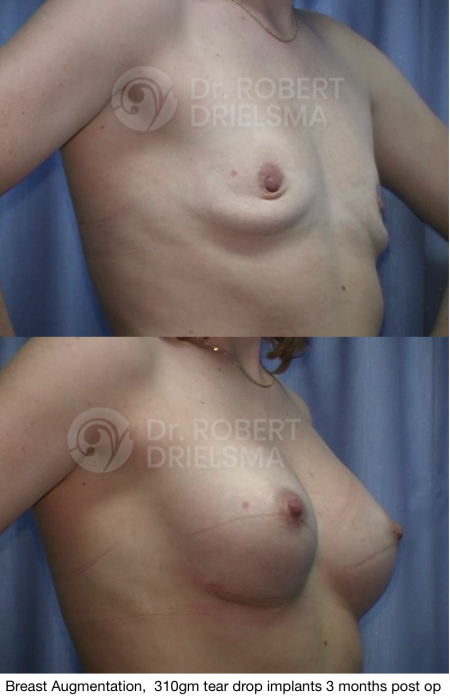
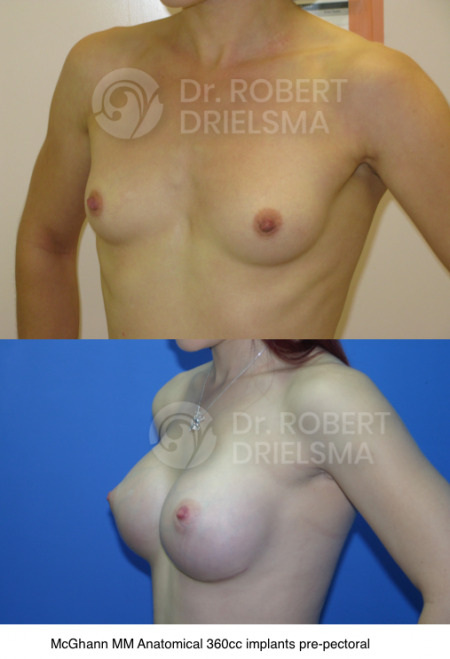
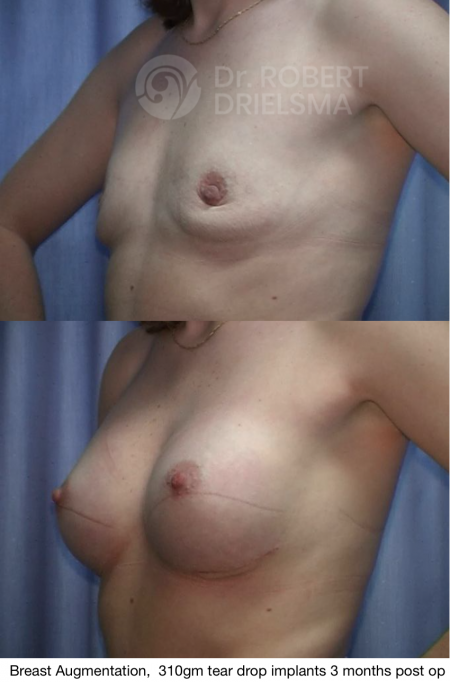
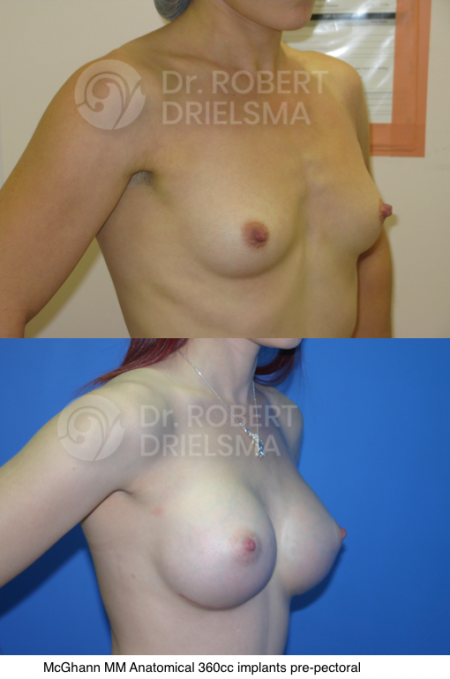
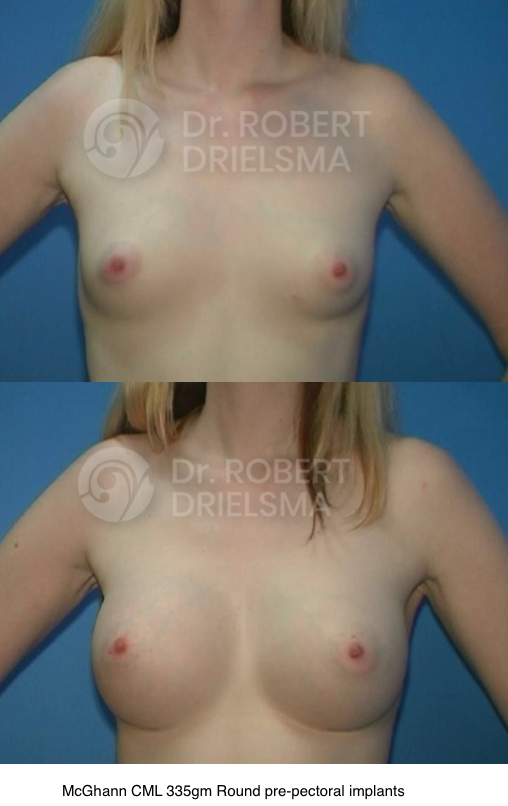
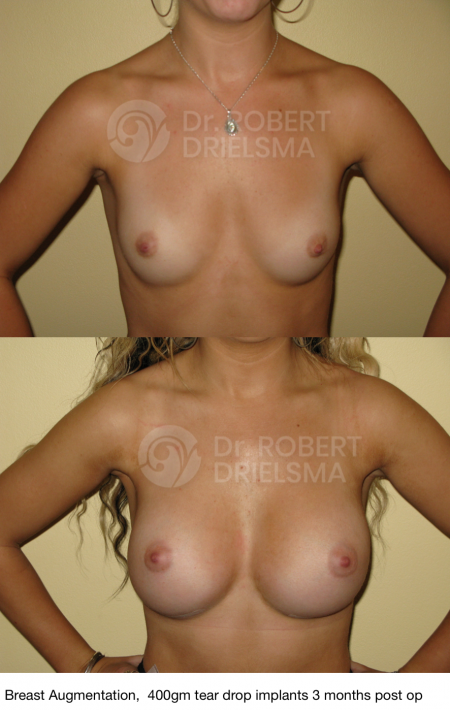
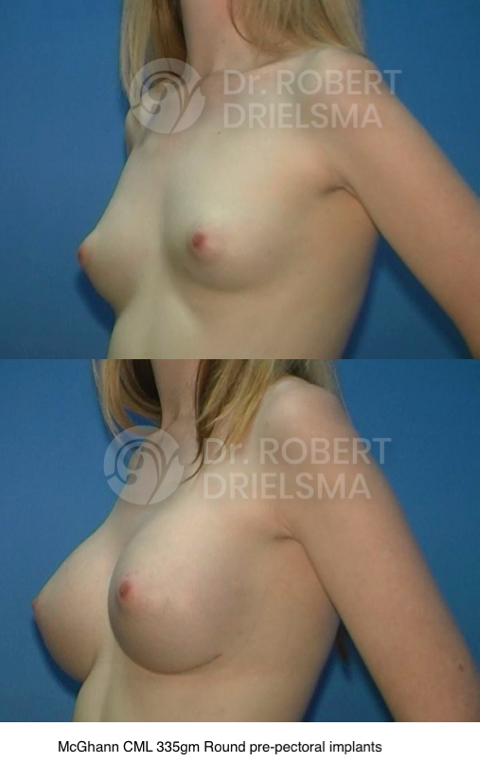
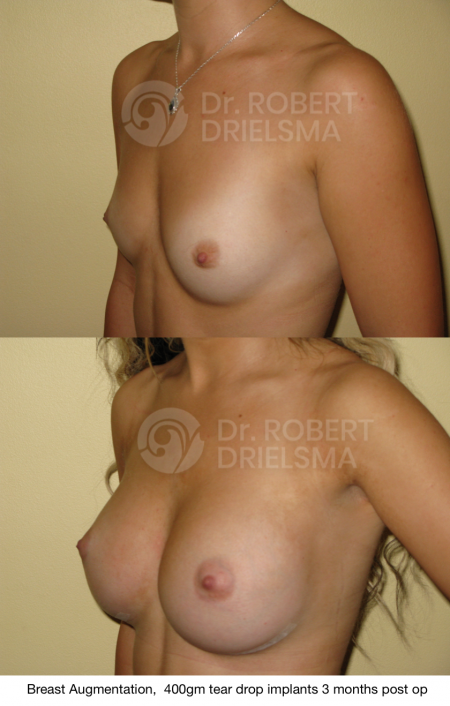
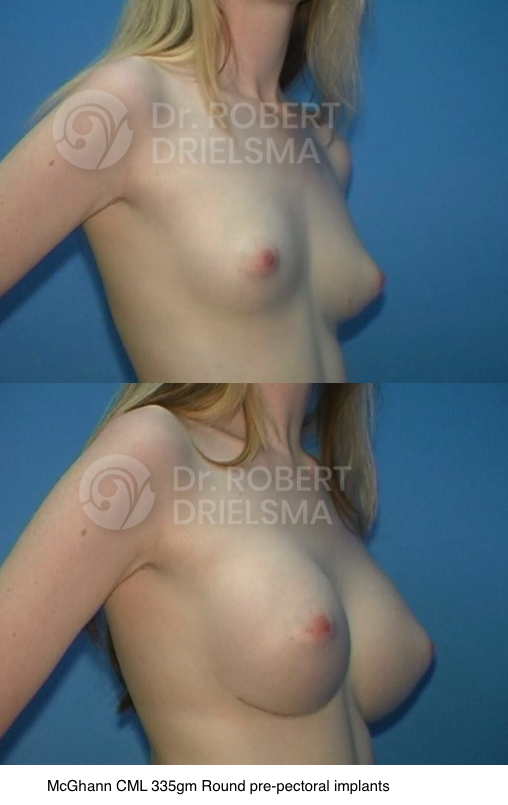
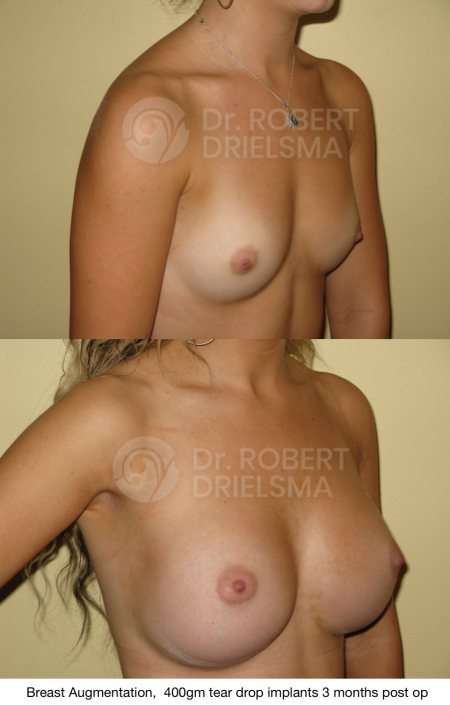
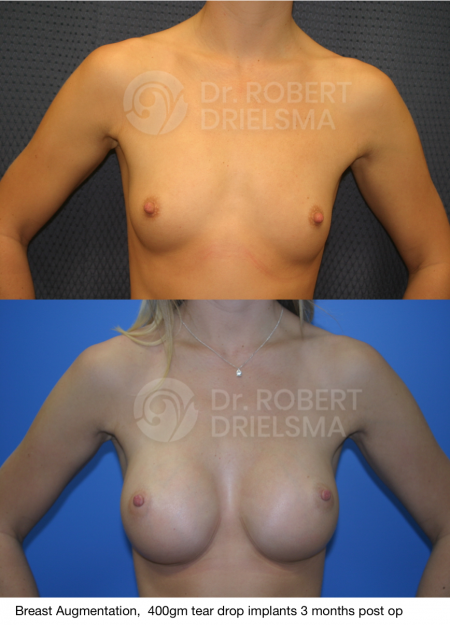
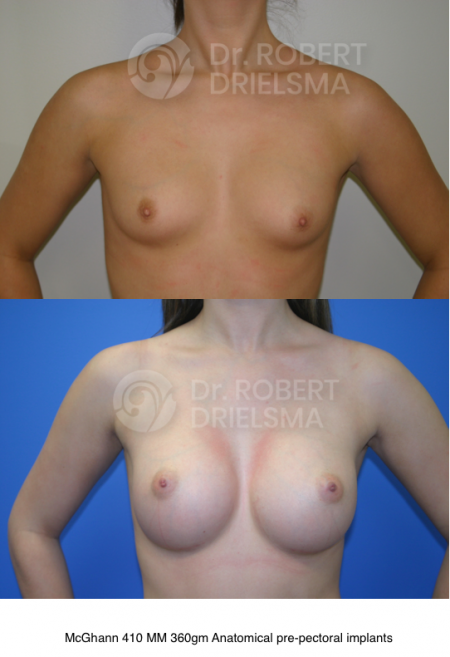
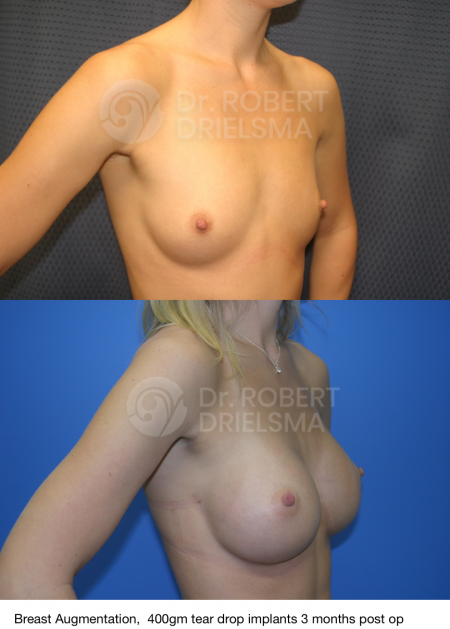
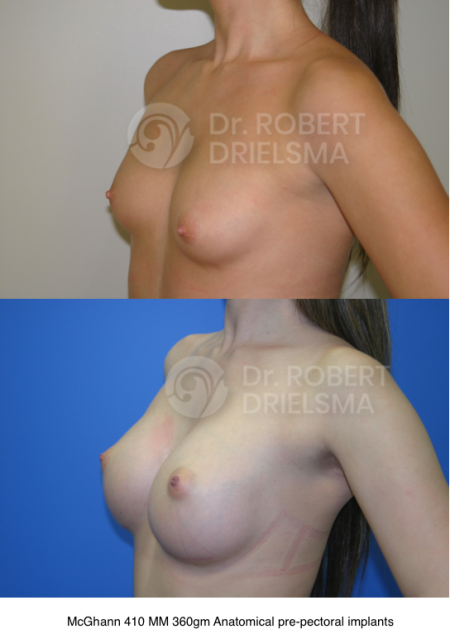
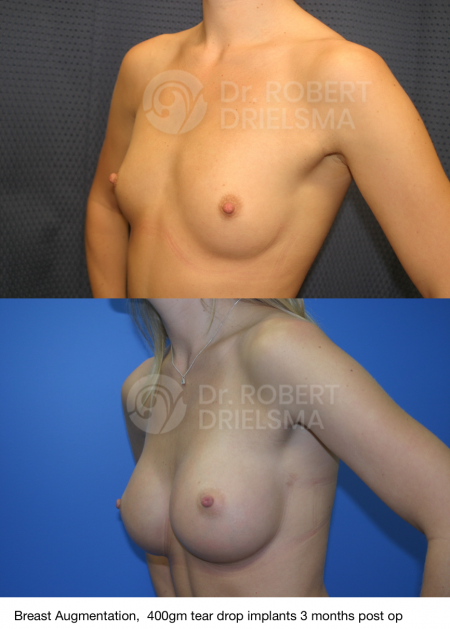
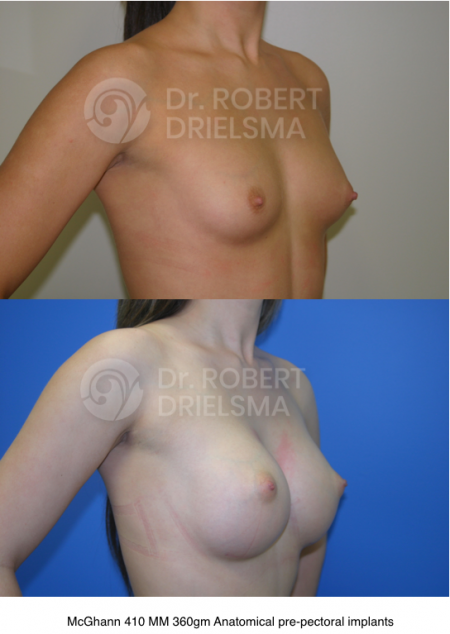
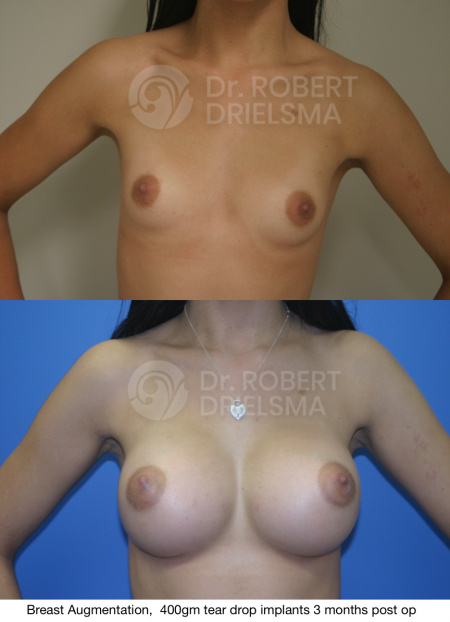
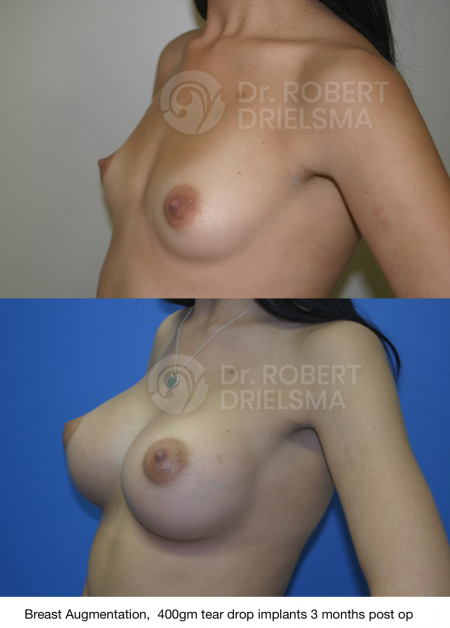
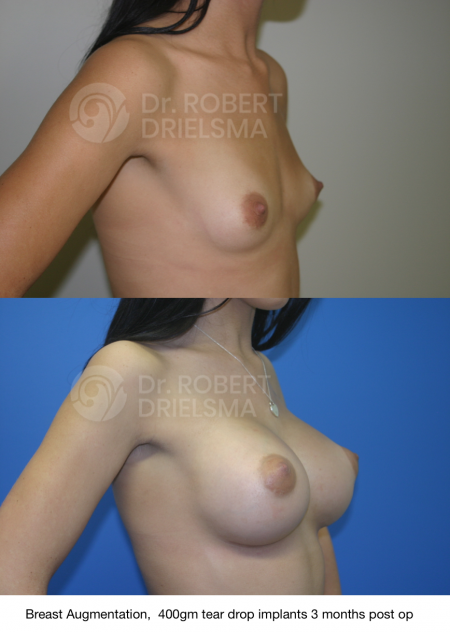
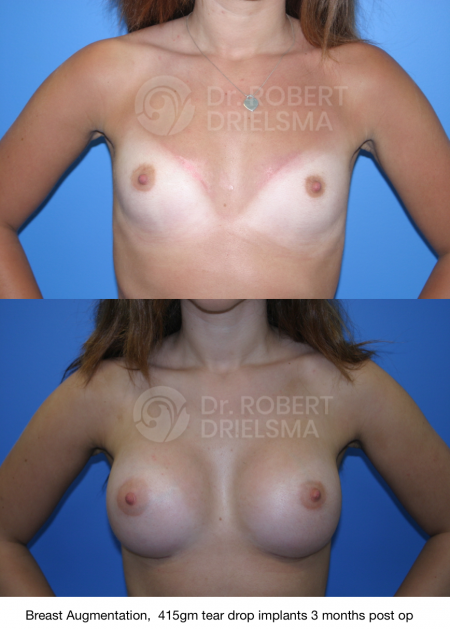
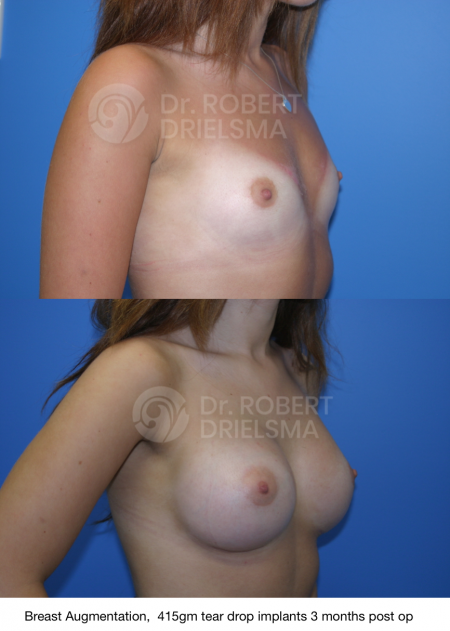

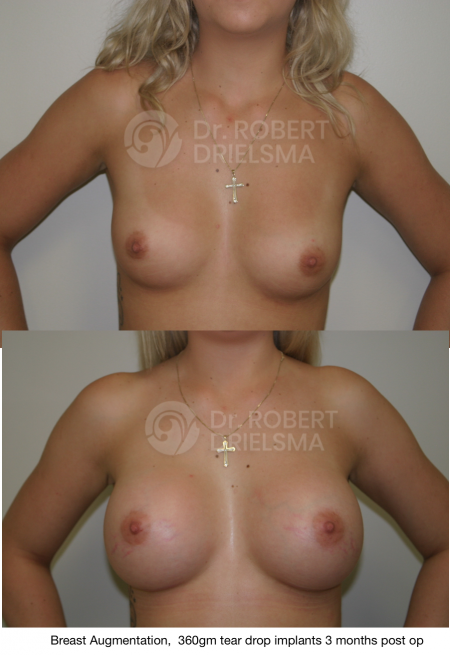
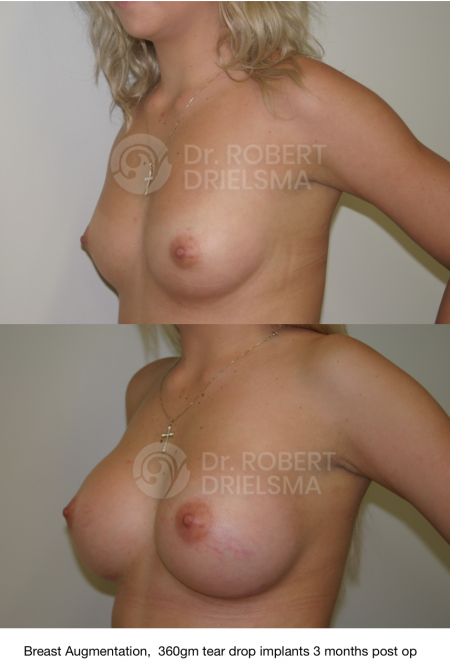
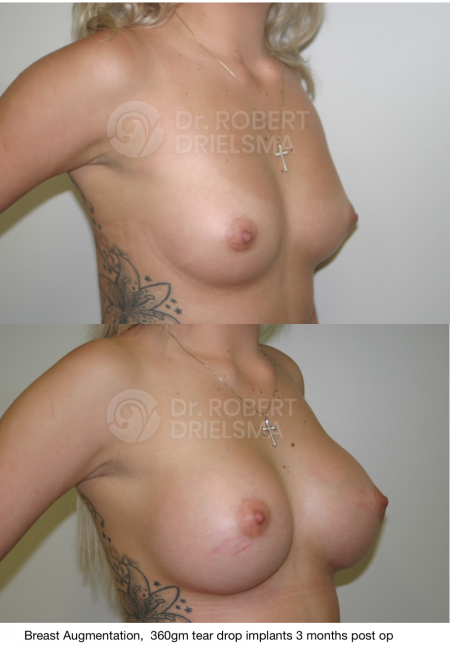
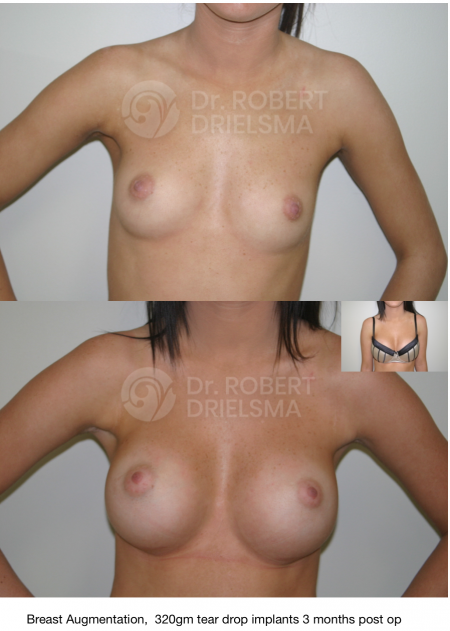
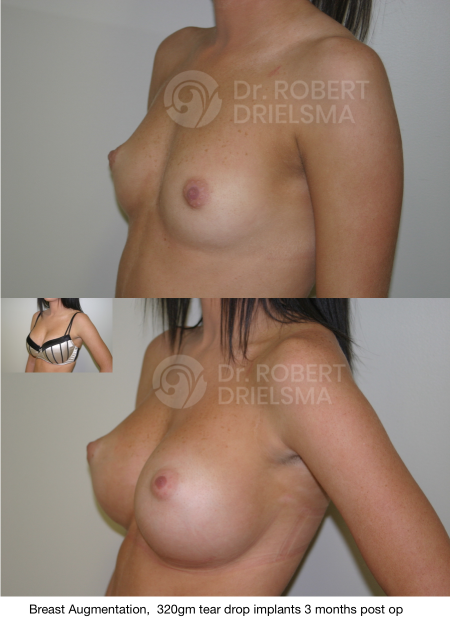
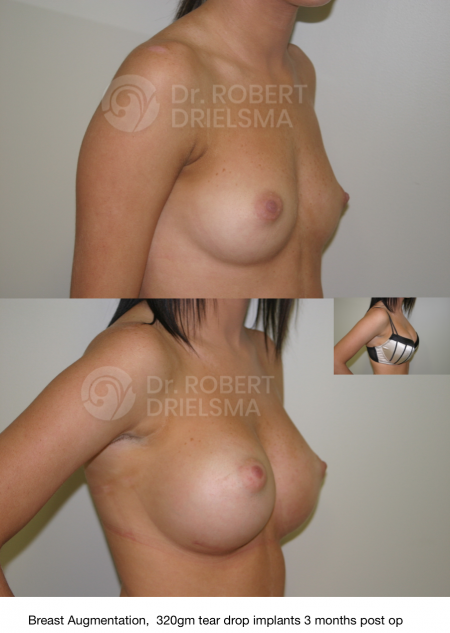
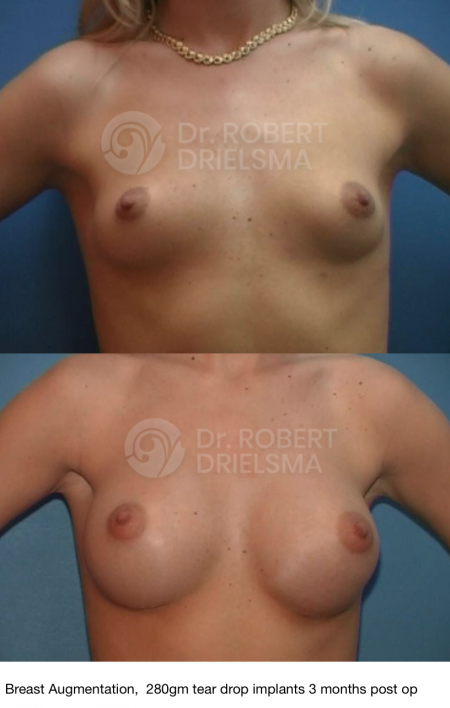
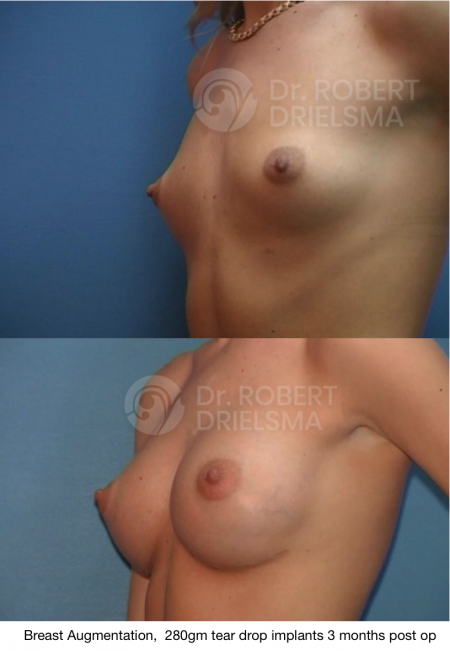
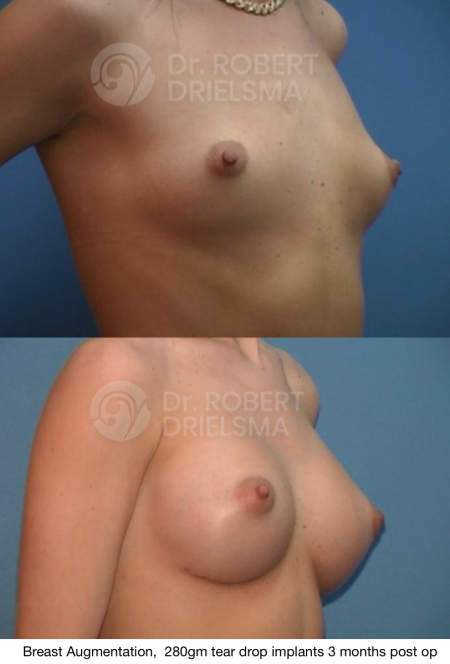


Dr. Robert Drielsma
Plastic Surgeon Specialist
MBBS, BSc(Med), FRACS (AHPRA MED 0001073756)
All images on this website are copyrighted and used with permission. Unauthorized use is prohibited.

Contact Us Now
Dr. Robert Drielsma
Plastic Surgeon Specialist
MBBS, BSc(Med), FRACS (AHPRA MED 0001073756)
All images on this website are copyrighted and used with permission. Unauthorized use is prohibited.

Contact Us Now
Dr. Robert Drielsma
Plastic Surgeon Specialist
MBBS, BSc(Med), FRACS (AHPRA MED 0001073756)
All images on this website are copyrighted and used with permission. Unauthorized use is prohibited.

Contact Us Now
Dr. Robert Drielsma
Plastic Surgeon Specialist
MBBS, BSc(Med), FRACS (AHPRA MED 0001073756)
All images on this website are copyrighted and used with permission. Unauthorized use is prohibited.

Contact Us Now
Dr. Robert Drielsma
Plastic Surgeon Specialist
MBBS, BSc(Med), FRACS (AHPRA MED 0001073756)
All images on this website are copyrighted and used with permission. Unauthorized use is prohibited.

Contact Us Now
Dr. Robert Drielsma
Plastic Surgeon Specialist
MBBS, BSc(Med), FRACS (AHPRA MED 0001073756)
All images on this website are copyrighted and used with permission. Unauthorized use is prohibited.

Contact Us Now
Dr. Robert Drielsma
Plastic Surgeon Specialist
MBBS, BSc(Med), FRACS (AHPRA MED 0001073756)
All images on this website are copyrighted and used with permission. Unauthorized use is prohibited.

Contact Us Now
Dr. Robert Drielsma
Plastic Surgeon Specialist
MBBS, BSc(Med), FRACS (AHPRA MED 0001073756)
All images on this website are copyrighted and used with permission. Unauthorized use is prohibited.

Contact Us Now
Dr. Robert Drielsma
Plastic Surgeon Specialist
MBBS, BSc(Med), FRACS (AHPRA MED 0001073756)
All images on this website are copyrighted and used with permission. Unauthorized use is prohibited.

Contact Us Now
Dr. Robert Drielsma
Plastic Surgeon Specialist
MBBS, BSc(Med), FRACS (AHPRA MED 0001073756)
All images on this website are copyrighted and used with permission. Unauthorized use is prohibited.

Contact Us Now
Dr. Robert Drielsma
Plastic Surgeon Specialist
MBBS, BSc(Med), FRACS (AHPRA MED 0001073756)
All images on this website are copyrighted and used with permission. Unauthorized use is prohibited.

Contact Us Now
Dr. Robert Drielsma
Plastic Surgeon Specialist
MBBS, BSc(Med), FRACS (AHPRA MED 0001073756)
All images on this website are copyrighted and used with permission. Unauthorized use is prohibited.

Contact Us Now
Dr. Robert Drielsma
Plastic Surgeon Specialist
MBBS, BSc(Med), FRACS (AHPRA MED 0001073756)
All images on this website are copyrighted and used with permission. Unauthorized use is prohibited.

Contact Us Now
Dr. Robert Drielsma
Plastic Surgeon Specialist
MBBS, BSc(Med), FRACS (AHPRA MED 0001073756)
All images on this website are copyrighted and used with permission. Unauthorized use is prohibited.

Contact Us Now
Dr. Robert Drielsma
Plastic Surgeon Specialist
MBBS, BSc(Med), FRACS (AHPRA MED 0001073756)
All images on this website are copyrighted and used with permission. Unauthorized use is prohibited.

Contact Us Now
Dr. Robert Drielsma
Plastic Surgeon Specialist
MBBS, BSc(Med), FRACS (AHPRA MED 0001073756)
All images on this website are copyrighted and used with permission. Unauthorized use is prohibited.

Contact Us Now
Dr. Robert Drielsma
Plastic Surgeon Specialist
MBBS, BSc(Med), FRACS (AHPRA MED 0001073756)
All images on this website are copyrighted and used with permission. Unauthorized use is prohibited.

Contact Us Now
Dr. Robert Drielsma
Plastic Surgeon Specialist
MBBS, BSc(Med), FRACS (AHPRA MED 0001073756)
All images on this website are copyrighted and used with permission. Unauthorized use is prohibited.

Contact Us Now
Dr. Robert Drielsma
Plastic Surgeon Specialist
MBBS, BSc(Med), FRACS (AHPRA MED 0001073756)
All images on this website are copyrighted and used with permission. Unauthorized use is prohibited.

Contact Us Now
Dr. Robert Drielsma
Plastic Surgeon Specialist
MBBS, BSc(Med), FRACS (AHPRA MED 0001073756)
All images on this website are copyrighted and used with permission. Unauthorized use is prohibited.

Contact Us Now
Dr. Robert Drielsma
Plastic Surgeon Specialist
MBBS, BSc(Med), FRACS (AHPRA MED 0001073756)
All images on this website are copyrighted and used with permission. Unauthorized use is prohibited.

Contact Us Now
Dr. Robert Drielsma
Plastic Surgeon Specialist
MBBS, BSc(Med), FRACS (AHPRA MED 0001073756)
All images on this website are copyrighted and used with permission. Unauthorized use is prohibited.

Contact Us Now
Dr. Robert Drielsma
Plastic Surgeon Specialist
MBBS, BSc(Med), FRACS (AHPRA MED 0001073756)
All images on this website are copyrighted and used with permission. Unauthorized use is prohibited.

Contact Us Now
Dr. Robert Drielsma
Plastic Surgeon Specialist
MBBS, BSc(Med), FRACS (AHPRA MED 0001073756)
All images on this website are copyrighted and used with permission. Unauthorized use is prohibited.

Contact Us Now
Dr. Robert Drielsma
Plastic Surgeon Specialist
MBBS, BSc(Med), FRACS (AHPRA MED 0001073756)
All images on this website are copyrighted and used with permission. Unauthorized use is prohibited.

Contact Us Now
Dr. Robert Drielsma
Plastic Surgeon Specialist
MBBS, BSc(Med), FRACS (AHPRA MED 0001073756)
All images on this website are copyrighted and used with permission. Unauthorized use is prohibited.

Contact Us Now
Dr. Robert Drielsma
Plastic Surgeon Specialist
MBBS, BSc(Med), FRACS (AHPRA MED 0001073756)
All images on this website are copyrighted and used with permission. Unauthorized use is prohibited.

Contact Us Now
Dr. Robert Drielsma
Plastic Surgeon Specialist
MBBS, BSc(Med), FRACS (AHPRA MED 0001073756)
All images on this website are copyrighted and used with permission. Unauthorized use is prohibited.

Contact Us Now
Dr. Robert Drielsma
Plastic Surgeon Specialist
MBBS, BSc(Med), FRACS (AHPRA MED 0001073756)
All images on this website are copyrighted and used with permission. Unauthorized use is prohibited.

Contact Us Now
Dr. Robert Drielsma
Plastic Surgeon Specialist
MBBS, BSc(Med), FRACS (AHPRA MED 0001073756)
All images on this website are copyrighted and used with permission. Unauthorized use is prohibited.

Contact Us Now
Dr. Robert Drielsma
Plastic Surgeon Specialist
MBBS, BSc(Med), FRACS (AHPRA MED 0001073756)
All images on this website are copyrighted and used with permission. Unauthorized use is prohibited.

Contact Us Now
Dr. Robert Drielsma
Plastic Surgeon Specialist
MBBS, BSc(Med), FRACS (AHPRA MED 0001073756)
All images on this website are copyrighted and used with permission. Unauthorized use is prohibited.

Contact Us Now
Dr. Robert Drielsma
Plastic Surgeon Specialist
MBBS, BSc(Med), FRACS (AHPRA MED 0001073756)
All images on this website are copyrighted and used with permission. Unauthorized use is prohibited.

Contact Us Now
Dr. Robert Drielsma
Plastic Surgeon Specialist
MBBS, BSc(Med), FRACS (AHPRA MED 0001073756)
All images on this website are copyrighted and used with permission. Unauthorized use is prohibited.

Contact Us Now
Dr. Robert Drielsma
Plastic Surgeon Specialist
MBBS, BSc(Med), FRACS (AHPRA MED 0001073756)
All images on this website are copyrighted and used with permission. Unauthorized use is prohibited.

Contact Us Now
Dr. Robert Drielsma
Plastic Surgeon Specialist
MBBS, BSc(Med), FRACS (AHPRA MED 0001073756)
All images on this website are copyrighted and used with permission. Unauthorized use is prohibited.

Contact Us Now
Dr. Robert Drielsma
Plastic Surgeon Specialist
MBBS, BSc(Med), FRACS (AHPRA MED 0001073756)
All images on this website are copyrighted and used with permission. Unauthorized use is prohibited.

Contact Us Now
Dr. Robert Drielsma
Plastic Surgeon Specialist
MBBS, BSc(Med), FRACS (AHPRA MED 0001073756)
All images on this website are copyrighted and used with permission. Unauthorized use is prohibited.

Contact Us Now
Dr. Robert Drielsma
Plastic Surgeon Specialist
MBBS, BSc(Med), FRACS (AHPRA MED 0001073756)
All images on this website are copyrighted and used with permission. Unauthorized use is prohibited.

Contact Us Now
Dr. Robert Drielsma
Plastic Surgeon Specialist
MBBS, BSc(Med), FRACS (AHPRA MED 0001073756)
All images on this website are copyrighted and used with permission. Unauthorized use is prohibited.

Contact Us Now
Dr. Robert Drielsma
Plastic Surgeon Specialist
MBBS, BSc(Med), FRACS (AHPRA MED 0001073756)
All images on this website are copyrighted and used with permission. Unauthorized use is prohibited.

Contact Us Now
Dr. Robert Drielsma
Plastic Surgeon Specialist
MBBS, BSc(Med), FRACS (AHPRA MED 0001073756)
All images on this website are copyrighted and used with permission. Unauthorized use is prohibited.

Contact Us Now
Dr. Robert Drielsma
Plastic Surgeon Specialist
MBBS, BSc(Med), FRACS (AHPRA MED 0001073756)
All images on this website are copyrighted and used with permission. Unauthorized use is prohibited.

Contact Us Now
Dr. Robert Drielsma
Plastic Surgeon Specialist
MBBS, BSc(Med), FRACS (AHPRA MED 0001073756)
All images on this website are copyrighted and used with permission. Unauthorized use is prohibited.

Contact Us Now
Dr. Robert Drielsma
Plastic Surgeon Specialist
MBBS, BSc(Med), FRACS (AHPRA MED 0001073756)
All images on this website are copyrighted and used with permission. Unauthorized use is prohibited.

Contact Us Now
Dr. Robert Drielsma
Plastic Surgeon Specialist
MBBS, BSc(Med), FRACS (AHPRA MED 0001073756)
All images on this website are copyrighted and used with permission. Unauthorized use is prohibited.

Contact Us Now
Dr. Robert Drielsma
Plastic Surgeon Specialist
MBBS, BSc(Med), FRACS (AHPRA MED 0001073756)
All images on this website are copyrighted and used with permission. Unauthorized use is prohibited.

Contact Us Now
Dr. Robert Drielsma
Plastic Surgeon Specialist
MBBS, BSc(Med), FRACS (AHPRA MED 0001073756)
All images on this website are copyrighted and used with permission. Unauthorized use is prohibited.

Contact Us Now
Dr. Robert Drielsma
Plastic Surgeon Specialist
MBBS, BSc(Med), FRACS (AHPRA MED 0001073756)
All images on this website are copyrighted and used with permission. Unauthorized use is prohibited.

Contact Us Now
Dr. Robert Drielsma
Plastic Surgeon Specialist
MBBS, BSc(Med), FRACS (AHPRA MED 0001073756)
All images on this website are copyrighted and used with permission. Unauthorized use is prohibited.

Contact Us Now
Dr. Robert Drielsma
Plastic Surgeon Specialist
MBBS, BSc(Med), FRACS (AHPRA MED 0001073756)
All images on this website are copyrighted and used with permission. Unauthorized use is prohibited.

Contact Us Now
Dr. Robert Drielsma
Plastic Surgeon Specialist
MBBS, BSc(Med), FRACS (AHPRA MED 0001073756)
All images on this website are copyrighted and used with permission. Unauthorized use is prohibited.

Contact Us Now
Dr. Robert Drielsma
Plastic Surgeon Specialist
MBBS, BSc(Med), FRACS (AHPRA MED 0001073756)
All images on this website are copyrighted and used with permission. Unauthorized use is prohibited.

Contact Us Now
Dr. Robert Drielsma
Plastic Surgeon Specialist
MBBS, BSc(Med), FRACS (AHPRA MED 0001073756)
All images on this website are copyrighted and used with permission. Unauthorized use is prohibited.

Contact Us Now
Dr. Robert Drielsma
Plastic Surgeon Specialist
MBBS, BSc(Med), FRACS (AHPRA MED 0001073756)
All images on this website are copyrighted and used with permission. Unauthorized use is prohibited.

Contact Us Now
Dr. Robert Drielsma
Plastic Surgeon Specialist
MBBS, BSc(Med), FRACS (AHPRA MED 0001073756)
All images on this website are copyrighted and used with permission. Unauthorized use is prohibited.

Contact Us Now
Dr. Robert Drielsma
Plastic Surgeon Specialist
MBBS, BSc(Med), FRACS (AHPRA MED 0001073756)
All images on this website are copyrighted and used with permission. Unauthorized use is prohibited.

Contact Us Now
Dr. Robert Drielsma
Plastic Surgeon Specialist
MBBS, BSc(Med), FRACS (AHPRA MED 0001073756)
All images on this website are copyrighted and used with permission. Unauthorized use is prohibited.

Contact Us Now
Dr. Robert Drielsma
Plastic Surgeon Specialist
MBBS, BSc(Med), FRACS (AHPRA MED 0001073756)
All images on this website are copyrighted and used with permission. Unauthorized use is prohibited.

Contact Us Now
Dr. Robert Drielsma
Plastic Surgeon Specialist
MBBS, BSc(Med), FRACS (AHPRA MED 0001073756)
All images on this website are copyrighted and used with permission. Unauthorized use is prohibited.

Contact Us Now
Dr. Robert Drielsma
Plastic Surgeon Specialist
MBBS, BSc(Med), FRACS (AHPRA MED 0001073756)
All images on this website are copyrighted and used with permission. Unauthorized use is prohibited.

Contact Us Now
Dr. Robert Drielsma
Plastic Surgeon Specialist
MBBS, BSc(Med), FRACS (AHPRA MED 0001073756)
All images on this website are copyrighted and used with permission. Unauthorized use is prohibited.

Contact Us Now
Dr. Robert Drielsma
Plastic Surgeon Specialist
MBBS, BSc(Med), FRACS (AHPRA MED 0001073756)
All images on this website are copyrighted and used with permission. Unauthorized use is prohibited.

Contact Us Now
Dr. Robert Drielsma
Plastic Surgeon Specialist
MBBS, BSc(Med), FRACS (AHPRA MED 0001073756)
All images on this website are copyrighted and used with permission. Unauthorized use is prohibited.

Contact Us Now
Dr. Robert Drielsma
Plastic Surgeon Specialist
MBBS, BSc(Med), FRACS (AHPRA MED 0001073756)
All images on this website are copyrighted and used with permission. Unauthorized use is prohibited.

Contact Us Now
Dr. Robert Drielsma
Plastic Surgeon Specialist
MBBS, BSc(Med), FRACS (AHPRA MED 0001073756)
All images on this website are copyrighted and used with permission. Unauthorized use is prohibited.

Contact Us Now
Dr. Robert Drielsma
Plastic Surgeon Specialist
MBBS, BSc(Med), FRACS (AHPRA MED 0001073756)
All images on this website are copyrighted and used with permission. Unauthorized use is prohibited.

Contact Us Now
-

Breast Implant Options
Breast augmentation mammoplasty offers a diverse range of implant options, tailored to meet individual preferences and medical considerations. Patients can choose between silicone and saline implants, each available in round or anatomically shaped designs.
Saline implants are distinguished by their unique characteristics. They are sometimes likened to a ‘water bed’ in feel, with a potential for a slight rippling effect observable under the skin. This phenomenon can be mitigated by selecting smooth-surfaced, round implants that are strategically overfilled (within the guidelines set by the manufacturer) to achieve a firmer texture. In the event of a rupture, saline implants will deflate, with the saline solution being harmlessly absorbed by the body.
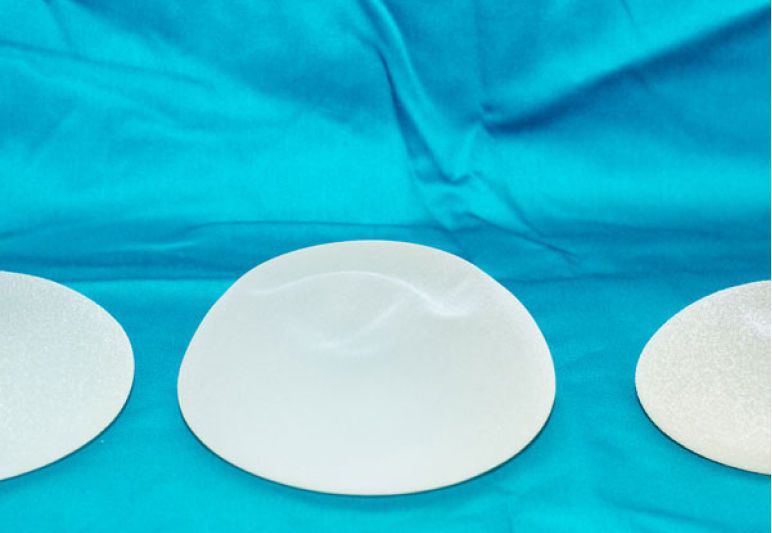
“Saline Breast Implant” if a saline implant rupture occurs, the saline will be absorbed harmlessly by the body.
Silicone implants are renowned for their lower propensity for rippling compared to their saline counterparts. This is attributable to the viscosity of the silicone gel used, which is engineered to closely resemble natural breast tissue. Silicone implants offer a more natural feel, enhancing their appeal. It is important to note, however, that unlike saline, silicone is not absorbed by the body. In rare cases, this may lead to complications such as capsular contracture or the hardening of the breast tissue.
Breast implants also come in different shapes – round and anatomical.
Round implants have the advantage that should they rotate in the breast pocket, the breast shape won’t be affected. Anatomically shaped or “tear-drop” shaped breast implants have the advantage of giving a more natural look by enhancing the lower pole of the breast while reducing the bulge of the upper pole of the breast. However, if an anatomical implant rotates in the breast pocket, breast shape is affected and it will need to be repositioned to restore the correct appearance.
-

Breast Augmentation Mammoplasty Scarring?
It is essential to understand that surgical procedures invariably involve some degree of scarring. This is also true for Breast Augmentation surgery. The extent and nature of scarring are influenced by several factors, such as the technique employed for the incision and your individual genetic predisposition towards scarring.
-

Breast Implant Complications
Although many women with breast implants will not experience any issues, there are some common and some less common complications that can occur. In 2019, the 3 most common complications for revision surgery were capsular contracture (37%), implant rupture (23%) and implant malposition (19%).
Women with breast implants are recommended to have reviews very 2 years with their surgeon or GP to assess for complications for the duration of the breast implant.
Capsular Contracture
Capsular contracture occurs when scar tissue that normally forms around the implant tightens and squeezes the implant resulting in progressive hardening, distortion and deformity of the breast. Severe capsular contracture can cause secondary implant rupture. Capsular contracture is graded clinically using the Baker classification.
BAKER GRADE
DESCRIPTION
1
Implant is soft and is not palpable and/or visible.
2
Implant is palpable, but no visible deformity.
3
Implant is hard, palpable and with some minor visibility (e.g. puckering, rippling, change in shape).
4
Implant is very hard and painful with significant deformity of breast and/or malposition.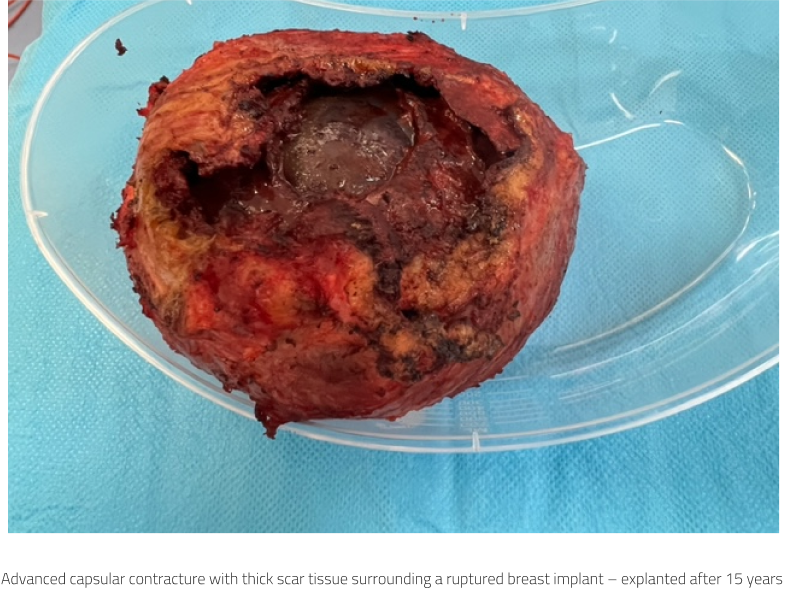
Breast Implant Rupture
All breast implants have an outer shell that can potentially develop a tear or hole i.e. a rupture. The risk of implant rupture increases as the implant ages and 50% of implants will show signs of loss of integrity at 10 years after surgery.
Implant rupture are classified into intracapsular and extracapsular rupture.
.Intracapsular rupture means the implant has ruptured inside the tissue capsule which the body has formed around the implant. Intracapsular rupture is usually asymptomatic, meaning the breast and implant looks and feels normal. It is usually diagnosed incidentally on an ultrasound performed for other reasons.
.Extracapsular rupture means the silicone has broken through the tissue capsule which the body has formed around the implant, and silicone can spread into the breast tissue or surrounding muscle. Extracapsular rupture can also be asymptomatic (known as silent rupture), but may result in breast pain, lumps in the breast or armpit or a change in size and shape of the breast.
An intracapsular rupture will eventually progress into an extracapsular rupture, but the rate of progression is unpredictable.Implant rupture can be detected on ultrasound, and confirmed by MRI.
Ruptured implants can interfere with breast screening. Silicone deposits in the breast tissue may mask an underlying breast cancer. Mammograms may worsen the implant rupture due to pressure applied to the implant.
Generally, it is recommended that ruptured implants be removed.Implant Malposition
The implant may move from its original pocket resulting in various deformities. This includes the double-bubble deformity, where the implant drops below the inframammary fold.Breast Implant Cancer (BIA-ALCL)
Breast Implant Associated Anaplastic Large Cell Lymphoma (BIA-ALCL) is a rare cancer of the immune system that occurs only in women with breast implants. It is not breast cancer, but rather a type of lymphoma that grows in the tissue capsule which the body has formed around the implant.
The risk of BIA-ALCL is estimated to be between 1 in 1000 and 1 in 10000, meaning 1 woman will be diagnosed with BIA-ALCL for every 1000 to 10000 women with breast implants.
All Australian cases have occurred in women with textured implants (and no cases in women with smooth implants as of January 2020). The risk of BIA-ALCL is significantly higher for “macro” textured (e.g. Silimed Polyurethane, Allergan Biocell) compared to “micro” textured (e.g. Mentor Siltex) implants. BIA-ALCL occurs with both saline and silicone implants. There is no difference in risk in women who have implants for breast augmentation or reconstruction.
The main symptoms of BIA-ALCL are persistent breast swelling or pain. It can also present as a lump in the breast or armpit. Most cases occur between 3 and 14 years after surgery.The first line investigation is a breast ultrasound to assess for the presence of fluid. If fluid is present, a sample will be taken to look for cancerous cells. Fluid collections (seroma) is common after breast implants and most are not BIA-ALCL. Mammograms are not helpful for the diagnosis.
Most patients with BIA-ALCL are cured by complete removal of the intact capsule with the implant contained inside, a technique known as total intact capsulectomy (or en-bloc capsulectomy).It is currently not recommended that breast implants be removed in women without any symptoms. This is because:
BIA-ALCL is considered relatively rare
BIA-ALCL has a high rate of cure once diagnosed
Any surgery and anaesthetic has risksOther considerations
Pain and discomfortReturn to the operating theatre for drainage of a haematoma will usually be required.
Asymmetry due to the breast implants
implant migration
implant rotation
breast implant illness
Breast Augmentation Mammoplasty Sydney
Dr. Robert Drielsma is a Sydney based Specialist Plastic Surgeon with extensive experience in Breast Augmentation Mammoplasty techniques. His aim is to always create natural looking breasts for his patients.
Dr. Drielsma is available for consultations at Bondi Junction in Sydney, Camden, Wagga Wagga and Canberra.
If you would like to book a consultation or find out more about breast lift or mastopexy surgery,
please visit our Contact Page, call 1800 180 777

Breast augmentation FAQ
-
What Downtime is There for Breast Augmentation Mammoplasty Surgery?
Breast augmentation mammoplasty is performed in an accredited hospital, under general anaesthetic by Dr Drielsma. The operation lasts around 1.5 hours, though this can change depending on each patient. The surgery is done on a day stay basis, no drains are used and you will be able to go home around 3 hours after surgery. You will be able to go back to work after a week but it is recommended you avoid exerting yourself or going to the gym for around 6 weeks until the bruising and swelling reduces.
-
When will I see Results?
You will see immediate results. However, swelling can take up to 6-12 months to fully subside and for your breast implants to settle into their final position.
-
What Complications are There?
Breast implants are not intended to be lifetime devices, they have a lifespan of 10-15 years. It is recommended that you have reviews every 2 years to assess for any complications. When considering breast implants, it’s important to be aware of the potential complications that can arise. Here are the top three complications often associated with breast implants:
- Capsular Contracture:
- Rupture or Leakage
- Infection and Asymmetry
It’s crucial to have detailed discussions with a qualified plastic surgeon before proceeding with breast implants. Dr Drielsma can provide personalised advice and help you understand the risks and expected outcomes based on your individual circumstances. Regular follow-ups and monitoring are also essential for maintaining the health and appearance of breast implants.
-
What about breast screening?
Breast implants cause very little, if any, interference with mammography. However, it is important you discuss your risk of breast cancer with your Plastic Surgeon and GP, especially if you have a first-degree relative with a history of cancer. All women who have had breast implants should inform their radiographer so tests can be adjusted as needed.
-
What is the cost of Breast Augmentation Mammoplasty?
“Good surgery isn’t cheap, and cheap surgery isn’t good”
Breast augmentation mammoplasty, a highly personalised procedure, exhibits a cost range that reflects the diversity in patient goals and the expertise of the surgeon. As the desired outcomes of augmentation mammoplasty vary significantly among individuals, so too does the associated cost, influenced by the unique approach and proficiency of each Specialist Plastic Surgeon. It is imperative for prospective patients to diligently research and select a Specialist Plastic Surgeon whose experience and quality of service align with their expectations and the financial investment required for the surgery. This careful consideration ensures that patients receive optimal care tailored to their specific aesthetic objectives.
-
What Should I Bring to my Consultations?
We recommend you bring a friend or relative with you to help discuss the information provided and your choices. Please wear simple clothing in case you need to undress for a physical exam. We also recommend you bring a notepad and thoroughly read all documents provided by Dr Drielsma so that you can make the best informed decision.
-
What about BIA ALCL that is in the news at the moment ?
Breast Implant-Associated Anaplastic Large Cell Lymphoma (BIA-ALCL) represents a rare, distinct pathology predominantly involving the tissue surrounding breast implants. Contrary to typical breast carcinomas, BIA-ALCL is a unique condition, with its prevalence and aetiology remaining subjects of ongoing global research and debate. Current data suggest its occurrence is rare, estimated to affect approximately one in every 4,000 to 10,000 women with specific breast implant types. The types of specific breast implants implicated with ALCL have been withdrawn from the market.
There is no recommendation from the TGA that women who were augmented with and currently have these specific implants still in them need to have them removed if they have given no problems. It is recommended that check ups be undertaken every 2 years and that if complication problem arise (such as scarring, fluid collection, pain etc), a review by a plastic surgeon be arranged and appropriate investigations be arranged.
For a comprehensive and current understanding of BIA-ALCL, we invite you to review the detailed statement provided by the Australasian Society of Aesthetic Plastic Surgery (ASAPS) available through the following link.
Statement on Breast implant associated-Anaplastic Large Cell Lymphoma (BIA-ALCL)
Additionally, the Therapeutic Goods Administration’s Breast Implant Hub serves as a valuable resource for the most recent updates and information regarding BIA-ALCL.
-
Next Step
-
Next Step: Book your Initial Consultation
- To arrange your consultation with Dr Drielsma, obtain a referral from your general practitioner and call 1800 180 777 to arrange your consultation appointment.
- A Referral from your GP or specialist is essential.
-
What to Bring to your Surgeon Consultation
- Bring a friend or relative to help discuss further information and consider your choices
- Take lots of notes and read the documents provided thoroughly
- You may need to undress for a physical exam so wear simple clothing
-
Want more information before scheduling your Surgeon consultation?
- Request further information about the procedure – call or contact us
- Book a patient Advisor chat – (FREE)
- Organise a phone call with Patient Advisor – (FREE)
-
Next Step: Book your Initial Consultation
**Individual results may vary. All surgery carries risks.
You should seek a second opinion from an equally qualified Specialist Plastic Surgeon before proceeding with surgery.

